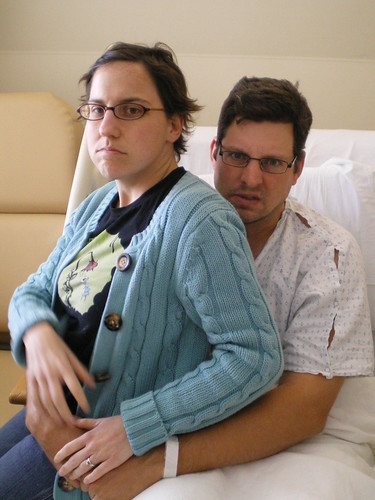
Image: SP Nurse on the Job by dharder9475
In the last few weeks I've been thinking about how we can support the learning that takes place when medical students are on placement. We know that entering wards can be a daunting experience for students. They don't feel part of a team. They don't know who everyone is. They don't understand what is happening. They don't want to interrupt nurses attending to patients or junior doctors catching up with paperwork at desks.They see other members of the team wandering in and out of the ward but they don't know what their role is. They don't recognose the social worker or the pharmacist or the OT. They might not even know what their own role is. They miss out on opportunities to attend meetings and teaching sessions because they don't know they are happening. In fact they spend too long waiting around for someone else to turn up to teach them, and on activities that have little educational value. They generally have a haphazard learning experience.
But placements are very rich environments with many unique opportunities to learn.
So what can we do?
Imagine instead that before coming to the ward the students had access to a network which let them find the profiles of all the staff who worked on that ward. They could see the timetables for teaching. They could even see what the last students who had been on this placement had seen and learnt. They can select what they would they would particularly like to gain from the placement, and this will become part of their profile which will also be available to all the staff on the ward. The network will also contain links to information about initiatives that are happening in the ward to address patient safety and quality improvement. They students can see if there are opportunities for them to get involved in this work and learn about the input their colleagues have had in the past.
When they turn up on the ward the students check in. They can see the profiles of the staff who are working there and when they should be finishing, when they will be on call and what clinics or theatre sessions they will be doing that week. Their calendar updates with activities that are happening that day that they should know about.
The network that they are tapping into is the same one that all the staff in the hospital use to keep themselves up to date. The students can record their learning and their thoughts about how the ward works. Their input is valued by the staff on the ward and their fellow students from other disciplines.
Do you think this will happen soon? Why hasn't it happened already? And how could patients use this network?




